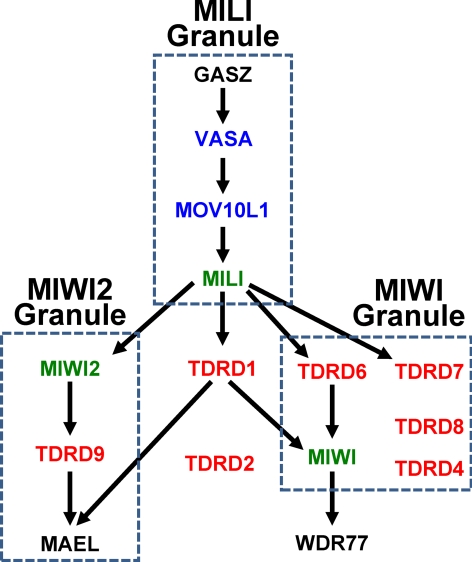Fig. 2.
Genetic model for nuage assembly and piRNA pathway genes in mice. Many of the proteins involved in piRNA production are conserved between Drosophila and the mouse (Table 2). Overall, two major types of piRNA granules are present: the MILI and MIWI granules are exclusively localized to the cytoplasm whereas the MIWI2 granules shuttle between the nucleus and cytoplasm. Whereas the cytoplasmic granule alone can produce primary piRNA (sense orientation), both granules are necessary for the production of secondary piRNA (antisense orientation) characteristic of the ping-pong amplification cycle. Three protein domains necessary for piRNA granule assembly that recur within the pathway components are the PIWI (green), TUDOR (red), and RNA helicase domains (blue). Mutual dependencies are represented by double-headed arrows. Components with insufficient evidence to assign a position within the pathway are listed at the bottom. See Table 2 for more detailed description of orthologous components.

